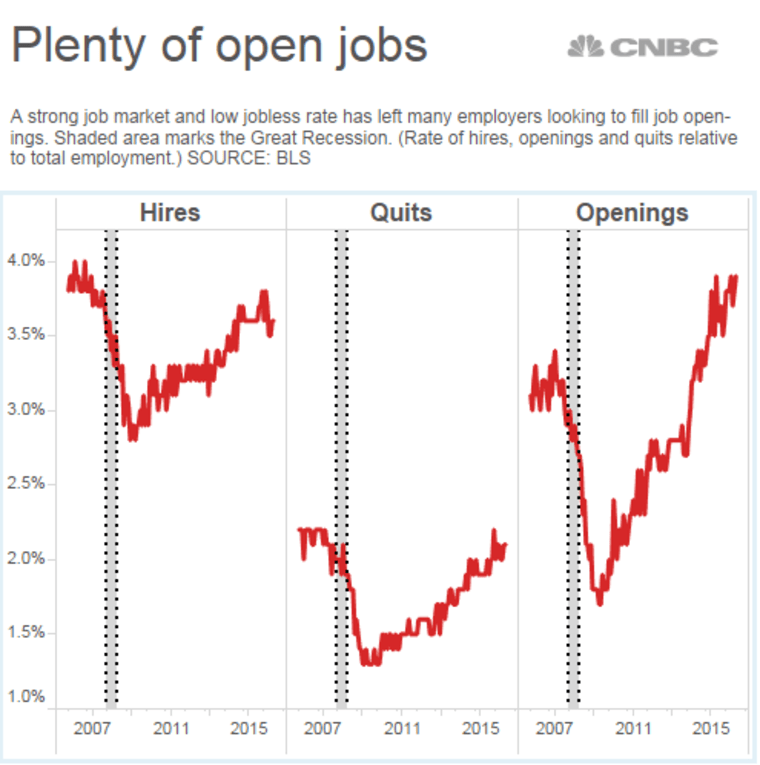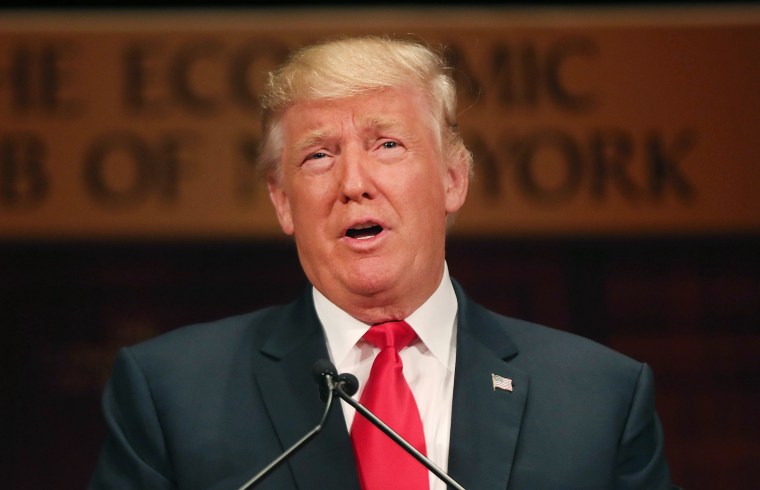Donald Trump's promise to grow the U.S. economy fast enough to create 25 million new jobs over the next decade is bound to win support among American workers.
There's only one problem with his pledge.
Without a wave of new immigrants entering the American workforce, Trump will have a hard time finding enough workers to fill those jobs.
In a speech Thursday to the Economic Club of New York, Trump outlined his latest proposals to revive a U.S. economy that has shown lackluster growth in the past year. In a post on his website, he promised to raise the growth of U.S. gross domestic product to 3.5 percent a year, nearly double the average pace so far this century.
In his remarks, he suggested a 4 percent growth target was achievable.
"My great economists don't want me to say this, but I think we can do better than that," he said.
With a series of tax cuts and a moratorium on federal regulations, the GOP candidate promised that a Trump economy would also expand U.S. payrolls by 25 million new jobs over the next decade, harkening back to a period when the economy grew at a more rapid pace.
Related: Trump Needs to Answer 20 Questions About Business Conflicts
"Between World War II and the year 2000, the United States averaged a 3.5 percent growth rate," he said. "But, after China joined the World Trade Organization, our average growth rate has been reduced to only 2 percent."
But beyond globalization, a lot has changed closer to home since those post-war boom to slow the growth of the American economy. That includes a slowdown in the growth in of the workforce.
"In the post World War II period, we had very strong labor force growth — especially with women entering the workforce in large numbers," said Chad Stone, chief economist at The Center on Budget and Policy Priorities. "Especially in the absence of immigration, those demographic trends are going to be impossible to replicate."
To be sure, millions of workers who gave up looking for a job after the Great Recession have been returning to the workforce, offsetting some of the demographic headwinds.
But an ongoing wave of aging baby boomers is leaving the labor force for good, reducing the number of workers available to fill new jobs.

Moreover, Trump's promise to close the door to new immigrants if he wins the election — and immediately deport millions of undocumented workers — would actually shrink the labor force.
In March, American Action Forum, a center-right policy institute led by former CBO director Douglas Holtz-Eakin, estimated it would take between $100 billion and $300 billion to arrest and remove "all undocumented immigrants residing in the country, a process that we estimate would take 20 years," the group said.
AAF estimated the removal of that many people would shrink the pool of U.S. workers by 6.4 percent, which means that 20 years from now the U.S. economy would be nearly 6 percent cent smaller. That works out to a loss of $1.6 trillion in lost wages, spending and other economic activity.
To put that in perspective, the gross domestic product for Texas last year was about $1.5 trillion, second behind California.
While this impact would be felt across the country and throughout the economy, sectors such as agriculture, construction, retail and hospitality would be hardest hit, the AAF reported.
In fact, employers are already having a hard time filling some new positions, based on the latest government data, which is one reason wages have begun rising again after nearly a decade of stagnation.

The number of monthly job openings rose again in July, to 5.9 million, the Bureau of Labor Statistics said earlier this month. That works out to a rate of 3.9 percent of overall employment, tied with a level hit last July. That rate of openings is higher than the early 2000s and was last seen in January of 2001, at the tail end of the 1990s dotcom boom.
"Despite the slowdown in payroll gains in August, labor market conditions continue to tighten, which should eventually generate a pick-up in wage growth later this year," according to Steve Murphy, an economist at Capital Economics.
Employers posted 5.9 million job openings in July, a rate of 3.9 percent, according to the Job Openings and Labor Turnover Summary (JOLTS) report. That compares to 5.62 million job openings in June, according to Thomson Reuters.
The survey, which tracks the number of open positions along with how many workers have been hired, fired or just up and quit their jobs, gets much less attention than the high-profile payroll and jobless rate data that comes out on the first Friday of every month.

